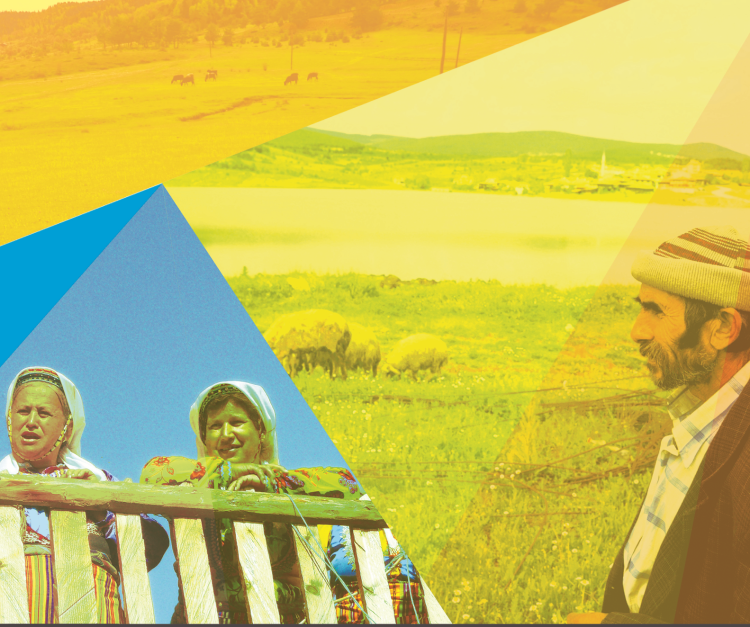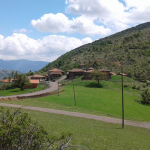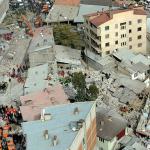Rural Ageing Analysis
Executive Summary
When the studies carried out by academic circles and related institutions on aging around the world are examined; It is seen that the social, economic, political and cultural problems that occur after the elderly population ratio of developed countries has reached serious dimensions, causing the studies in this field to increase in quantity and quality. For this reason, the importance of the integration of the elderly with the society, increasing their functionality and improving the quality of life is increasing day by day. This issue requires re-examination of the old age phenomenon and old age policies in Turkey as in all other countries. It is observed that aging, lonely and impoverished individuals experience various socio-cultural and economic problems due to their inability to be self-sufficient. As stated in the "State of the Elderly and the National Action Plan Implementation Program on Aging" prepared by the Ministry of Family and Social Policies (ASPB), an accurate analysis of the changes in the population distribution and their effects will contribute to the solution of the negative effects of the aging population, which we will encounter more intensely in the coming years, before they turn into a problem will provide. As a result of the demographic transformation in Turkey, with the transition from high fertility and high mortality to low fertility and low mortality, vital statistics show that the population has entered the aging process, although the rate of young population is still higher than many other countries. According to the data of the Turkish Statistical Institute (TUIK), it is seen that the ratio of the population aged 65 and over, which was around 3.9% from 1935 to 1990, did not change much. However, this rate reached 5.7% in 2000 and 8.4% as of 2013. At the same time, according to the population projection studies made by TURKSTAT, the rate of elderly population is 9.4% (about 8 million people) in 2023, 20.8% (19.5 million people) in 2050 and 27.7% (about 8 million people) in 2075. It is predicted that there will be 24.7 million people). According to the results of the United Nations' aging rate and size study, it is predicted that this indicator will be higher in Turkey than in many other countries. Another supportive study is the United Nations' aging rate and size study. According to the results of this study, it is predicted that this indicator in our country will be higher than that of many countries in the coming years. In the study, while the rate of increase in the population aged 80 and over is 736% for Turkey, this rate remains as 134% for Belgium, 142% for Denmark, 140% for France and 153% for Germany. Although we lag behind European Union countries and developed countries in terms of elderly population, this situation, which has emerged due to the rapid aging of the country's population, shows that it will cause serious economic and social problems in the future. When the official statistics and research are examined; Considering the rate of population aged 65 and over in the distinction between urban and rural in Turkey, it is seen that the rate of the elderly population is higher in the total population living in rural areas. According to TUIK 2013 data, 8% of the population in provincial centers, 9% in district centers, and 12% in villages consists of individuals aged 65 and over, but the proportion of the elderly population is not evenly distributed regionally. According to the official statistics of TUIK for 2013, while the rate of the population aged 65 and over in Turkey is 7.7%, this rate is approximately twice as high as 15.6% in the TR82 Region. Kastamonu, Sinop and Çankırı provinces, which are included in the TR82 Region among the NUTS-2 regions, stand out as the oldest regions of Turkey, and therefore it is important to determine the needs and current situation of the elderly population living in rural areas in the region and to produce regional policies for the elderly. With this research, which was carried out to understand the situation of the elderly in the rural area of the TR82 Region, it was aimed to develop a new perspective on the policies and regulations to be developed for the elderly living in the rural area. Based on all these, it was aimed to analyze the current situation of the elderly living in rural areas in the provinces of the TR82 Region; The study, which is the subject of the report, was carried out using quantitative and qualitative research techniques. In this study, the general living standards of the elderly were determined by face-to-face interviews with a total of 315 people in 18 villages determined by KUZKA in the TR82 Region; the dimensions of daily activities, relationships with relatives and children were determined; general needs, general quality of life and satisfaction were researched and suggestions were made to maintain or improve the current situation. In the first parts of the research report, aging and aging indicators in the world and in Turkey and the literature on this subject are separated, in the following parts the research purpose, scope and method are discussed, and at the end, research findings and recommendations are presented. It has been determined that one out of every two people interviewed within the scope of the research does not live anywhere other than the village where he was born. Again, one out of every two people who migrated from the village settled in a different village in the same province. The main reason for migration out of the village was determined as work for men and marriage for women. The illiteracy rate of the interviewees is high. 96% of the elderly within the scope of the study have an average of 4 children. One out of every two women and one in five men has lost their spouse. In the interviews, the majority of women stated that they never worked, but they said that they were engaged in agriculture and/or animal husbandry to provide for the family in the past. It is among the findings obtained that those with temporary income work within the scope of agriculture and animal husbandry, and the elderly living with their spouse or children live on their household income. Two out of three interviewees have an income of less than 1,000 TL (median income of 872 TL). 9 out of 10 men and 8 out of 10 women have social security. 6 out of 10 women who have social security have this security because of their spouses and one for their children. Out of every 10 people, 4 of them are the owners of the Social Insurance Institution (BAĞ-KUR), 3 of them are the Social Insurance Institution (SSK), 1 of them is the Pension Fund and one of them has a green card. It has been determined that in the region where returning to the village after retirement is common, one third of those born in the village return to the village after retirement, and 4 out of every 5 people have settled in the village where they were born. Among the reasons to migrate after retirement; It is difficult to live in the city and longing for the village, his family and relatives live in this village, it is difficult to make a living in the city with a pension, and the living conditions in the village are easier and better for retirement. Within the scope of the research, the physical characteristics of the places where the elderly live were also examined and the household information was discussed. Considering the preferences of the interviewed elderly people to live together, it is seen that they mostly tend to lead an independent life in their own homes/villages. It has been determined that the elderly, who stated that they live in their own house with their children, mostly live with their married son, daughter-in-law and grandchildren living in the same village. It can also be said that some of the elderly people who state that they live with their children live together with their children in a detached house and lead a life with their children but in a way 'independent' from them. In addition, it has been witnessed that children who have never been married or divorced, children with mental or physical disabilities or their relatives live with the elderly, albeit at a very low rate. In this context, the use of time and daily activities of the elderly were also examined. Worship has the highest rate among these activities. This is followed by spending time at home, listening to the radio/watching TV and visiting neighbors.Nine-tenths of the elderly people in the visited villages stated that they had neighbors and relatives they could spend time with, while eight-tenths of them stated that they believed that their neighbors and relatives living in the same village would help them if they needed anything. The proximity of the villages to the city/district center affects where the elderly people meet their basic needs. While the people living in the villages close to the city center meet their needs more and more because they are more connected, it has been determined that the elderly living in the villages far from the city/ district centers meet their needs mostly from the village grocery store and through traveling salesmen. It was understood that seven out of every ten elderly people interviewed had health services in their village. A family doctor visits some villages once every two weeks. The elderly stated that they were very satisfied with this service. Nine out of ten elderly people use drugs continuously as a result of their illnesses. One of these nine elderly people who need to use medication continuously cannot use their medications regularly, usually because of forgetting. While one out of every three elderly people stated that they go to a health institution every month, one fifth every six months, and one in ten once a year, nine out of ten elderly people stated that they were satisfied with the service of the health institution they went to when they got sick. Those who are dissatisfied are generally those who live in villages far from the center and have economic difficulties. In addition, the remoteness of the health institutions and the lack of vehicles, and the lack of attention in the health institutions in the province/district centers came to the fore as the reasons that led to dissatisfaction. Six out of ten elderly people interviewed stated that they were satisfied with their lives, and it was observed that the rate of women was higher than that of men. According to the life satisfaction indicator calculated for the provinces, satisfaction is ranked from top to bottom as Çankırı, Kastamonu and Sinop. It has been observed that general life satisfaction tends to decrease with increasing age. The tendency of general life satisfaction to decrease with increasing age can be explained by the decrease in quality of life. The group with the highest life satisfaction is the elderly between the ages of 65-74. It has been observed that the satisfaction level of the elderly, whose quality of life is increased by the fact that they perform their daily living activities mostly without assistance, is also high. It is observed that the life satisfaction of the elderly, who do not have a regular income source but are satisfied with their life, is high enough to be ignored.




